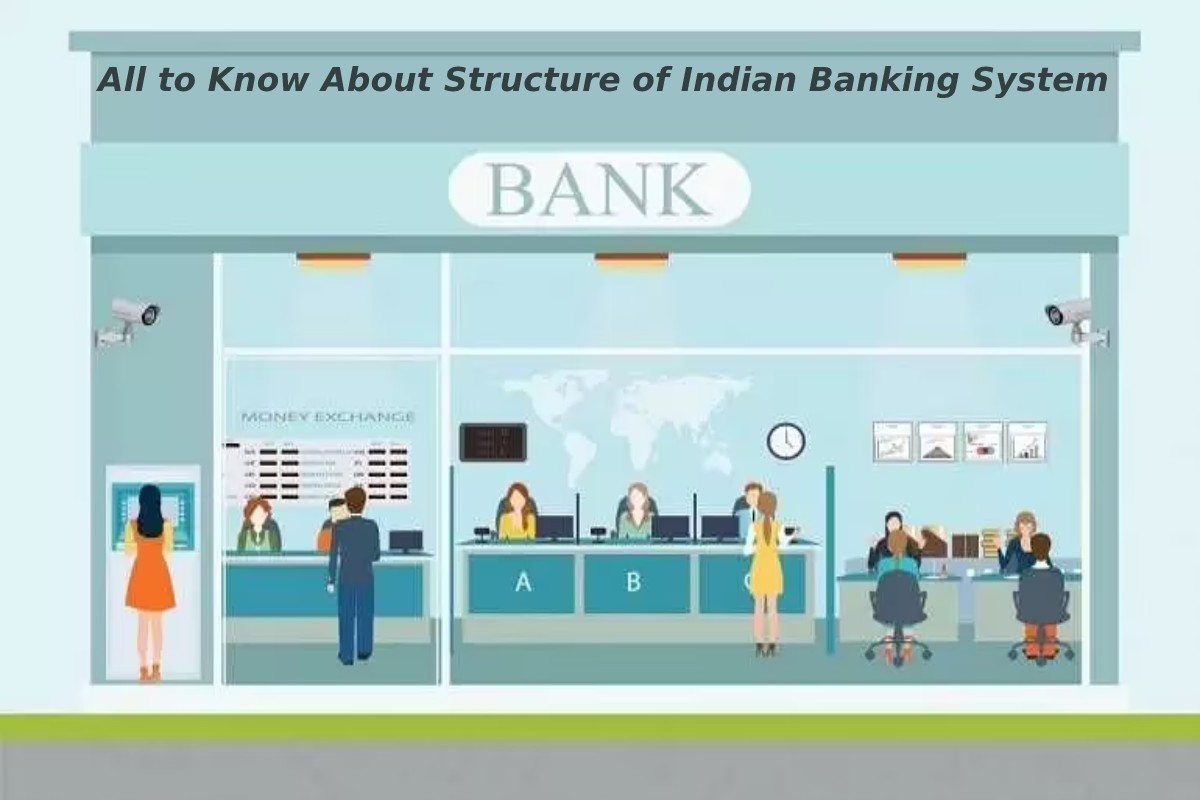Indian Banking System
The Country`s Indian Banking System is a very important part of the financial system economy. In an economy The primary role of banks is to mobilize disburse and deposit loans to several sectors of the economy. Today’s sophisticated banking structure in India has developed over several decades.
The Indian Banking System Structure
RBI – The Reserve Bank of India regulates the banking systems of India. It is the central bank of the country. Although, the Indian banking system structure is roughly dividing into registered banks, unscheduled banks, and development banks.
Banks included in the second list of the Reserve Bank of India Act 1934 are considered registered banks.
All programmed banks enjoy the following facilities:
- Said bank will be approving by the RBI for debts/loans at the bank rate.
- This bank automatically becomes a member of a clearinghouse.
- All banks not included in the second section of the Reserve Bank of India Act 1934 are unscheduled banks. And also, Except in emergencies, you are not authorizing to borrow from the RBI for regular banking purposes.
- Line banks are subdividing into Commercial and Cooperative Banks.
- Planned and unscheduled banks into Development Banks
Commercial Banks
The Institutions that accept deposits from the general public and make loans to generate profits are known as commercial banks These banks can mostly dive into the public sector, private sector, foreign banks, and RRB.
-
In Public Sector Banks
Following the recent merger of smaller banks with larger banks, there are currently 12 public sector banks in India. The majority pole is in the hands of the state. An example of a public sector bank is the State Bank of India.
-
Private Sector Banks
The banks in which most of the capital is held by private interest groups or commercial companies. However, Some of the Indian prominent private banks are Kotak Mahindra, HDFC, ICICI Banks, etc.
-
A foreign bank
It is a bank headquartered abroad but operates its offices as an individual in another location outside the country. These banks must operate under the rules of the country’s central bank and the rules of the parent company based outside of India. An example of a foreign bank in India is Citi Bank.
-
The Regional Rural Banks
The scope of the RRB is limited to the area notified by the government. An example of RRB in India is the Rural Bank of Arunachal Pradesh. Although, They were establishing under the Regulation of Regional Rural Banks of 1975 to ensure enough institutional credit for agriculture and other rural sectors.
Cooperative Banks
A recognition union is a financial institution own by its members, both owners and customers of your bank. Cooperative banks are the main drivers of agricultural activities, some small industries and the self-employed. They offer their members numerous banking and financial services. And also, An example of a cooperative bank is the Mehsana Urban Cooperative Bank.
On the ground floor, people come together to form a credit union. People in society include an association of borrowers and non-borrowers who are residents of a particular place and who are interested in the business affairs of others. Since membership is practically open to all residents, people of different statuses come together in the typical organization. All companies in a region merge to form a cooperative central bank.
Cooperative Banks are dividing into two categories: Urban and Rural
- Rural credit unions are short or long-term.
- Short-term credit unions can be divides into state credit unions, central district credit unions, and primary agricultural credit companies.
- Long-term banks are stating credit unions for agricultural and rural development (SCARDB) or primary agricultural and rural development (PCARDB).
- And also, Urban credit unions (UCBs) refer to primary credit unions in urban and semi-urban areas.
Development Banks
Development banks are financial institutions that offer long-term loans to support long-term, low-yield, capital-intensive investments with significant social benefits. Although, The central development banks of India are; Industrial Finance Corporation of India (IFCI Ltd), 1948, Industrial Development Bank of India (IDBI) 1964, Export-Import Banks of India (EXIM) 1982, Small Scale Industries Development Bank of India (SIDBI) 1989, National Bank for Agriculture and Development rural (NABARD).
Indian Banking System can significantly influence the development of a country’s economy. It is also critical in developing a country’s rural and suburban areas, providing capital to small businesses, and helping them grow their businesses. The organized financial system includes commercial banks, regional rural banks (RRB), municipal cooperative banks (UCB), primary agricultural credit enterprises (PACS), etc., and meets the financial service needs of the people.
Financial inclusion creativities taken by the Reserve Bank and the Government of India have significantly improved access to formal financial institutions. Therefore, a country’s banking system is of great importance for economic growth and promoting economic equality.

